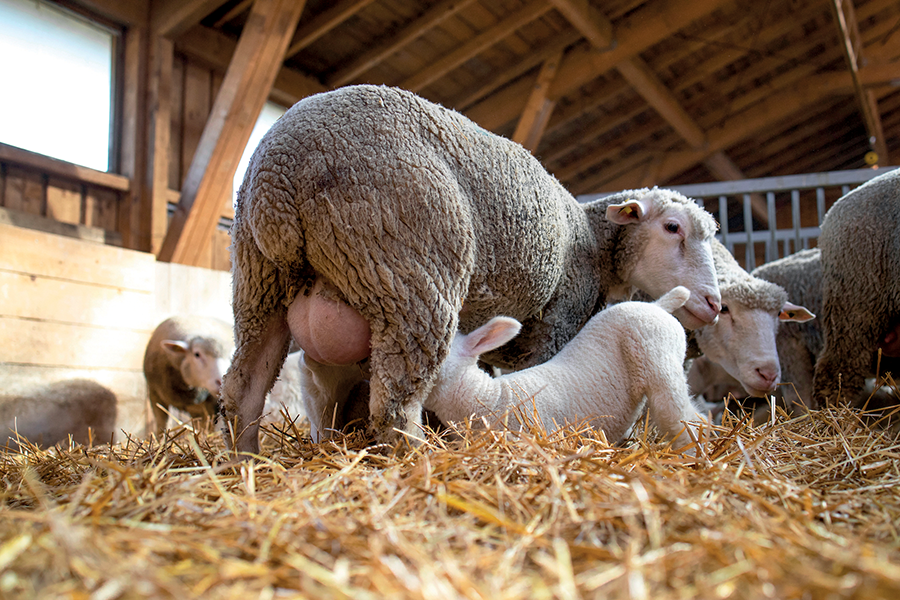Preparing for lambing: Ewe management and reducing neonatal disease
13th December 2023
Farm vet Faye Heath, of Westpoint Farm Vets in Winchester, provides some top tips to ensure a successful lambing season.

Since production of Spectam Scour Halt – the only authorised oral antibiotic product for controlling watery mouth – ceased last year, there is understandable concern about how to treat confirmed cases on farm.
Watery mouth is an infectious overgrowth of E. coli in the gut and it is commonly seen in lambs which haven’t received enough colostrum. Targeted treatment may involve injectable antibiotics but only on a case-by-case basis for high-risk individuals, where a proactive health plan is in place and there are no suitable alternatives.
The importance of ewe nutrition, lambing hygiene and colostrum management cannot be overstated in the reduction of neonatal lamb disease, including watery mouth. Consider these factors now to ensure you’re prepared for the lambing period, when time is a precious commodity.
Ewe nutrition and vaccination must be managed during the pre-lambing period. Condition score ewes at mid pregnancy and close to lambing time to assess nutrition provision and identify any issues early. A score of 3-3.5 for lowland ewes is recommended six weeks pre-lambing.
It may be necessary to put ewes into different groups where there is a large variation in body condition score. Metabolic profiling will also assess whether dietary energy, protein and mineral levels are appropriate and can be discussed with your vet along with forage analysis. This can aid in decisions on trace element boluses.
As 75% of lamb growth occurs in the last six weeks of pregnancy, ewe nutrition must be considered both before and during the lambing period to ensure good birthweights and colostrum quality.
Other considerations include providing enough trough space (50cm per ewe for concentrate) and clostridial vaccination boosters 4-6 weeks pre-lambing. As there were production issues with clostridial vaccines last year and continued supply issues, it is more important than ever to manage your vaccination plans well in advance.
Maintaining good hygiene in the lambing shed will reduce both the bacterial load in the environment and the infection pressures on lambs. Further steps to consider before and during lambing include:
- Reducing stocking density
- Ensuring adequate ventilation and drainage in the lambing shed
- Bedding down regularly
- Disinfecting pens, especially where there are cases of ill or aborted animals
- Wash hands between handling sick and healthy animals as well as aborted material
- Dip navels immediately after birth in iodine solution and repeat after 2-4 hours
- Provide heat lamps or shelter in colder weather as cold weak lambs will have a reduced colostrum intake.
As stressed by the AHDB, ‘colostrum is gold’ and planning is essential for colostrum management during lambing. Frozen colostrum from other ewes in the flock is preferred over powdered colostrum due to the variation in quality, which is equally important as quantity. Check ewe colostrum supply if in any doubt and ensure that lambs receive a minimum of 50ml/kg within two hours of birth as well as 200ml/kg in the first 24 hours. It is also important to supplement any animals with a difficult birth or where dams have an insufficient supply, via stomach tube.
